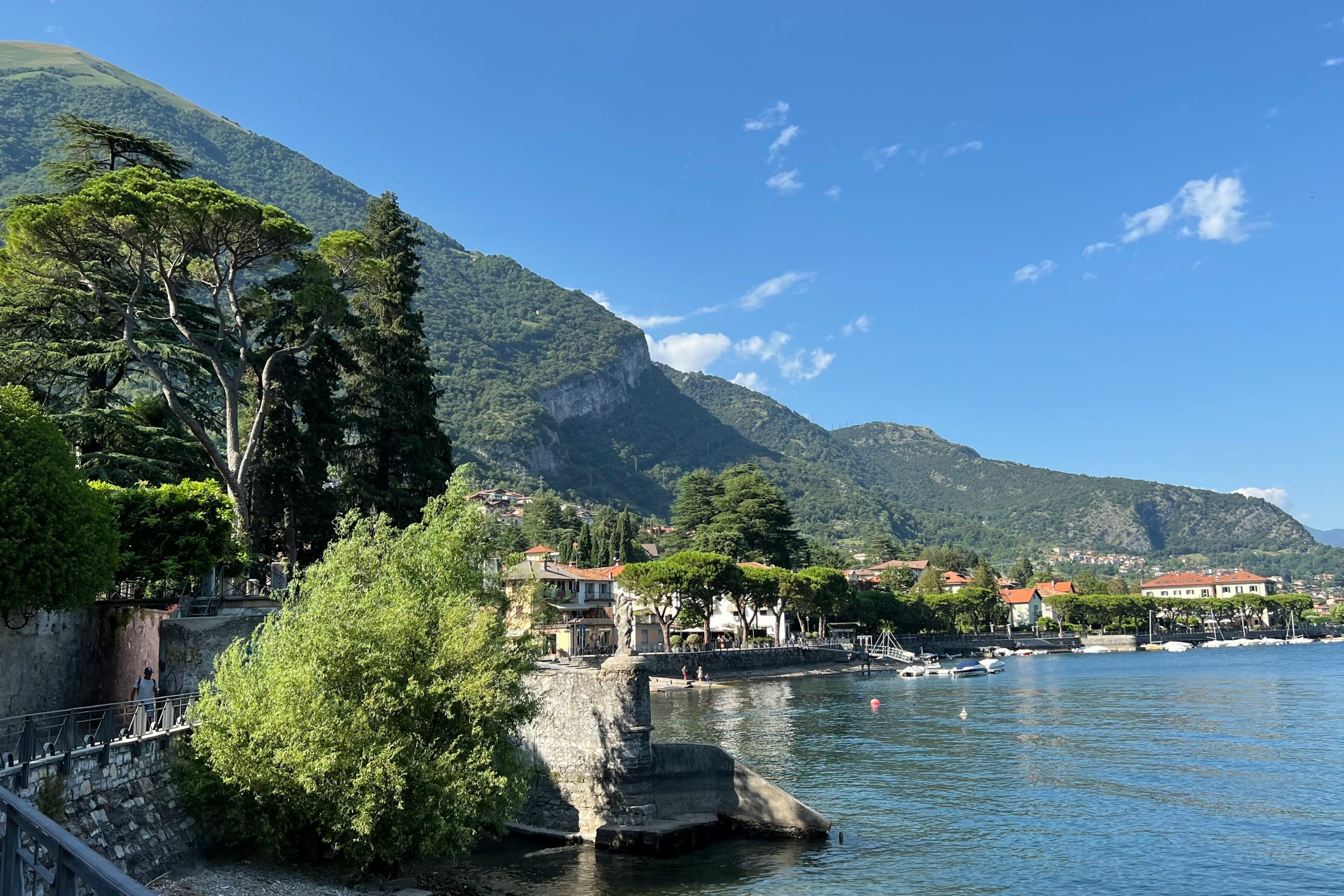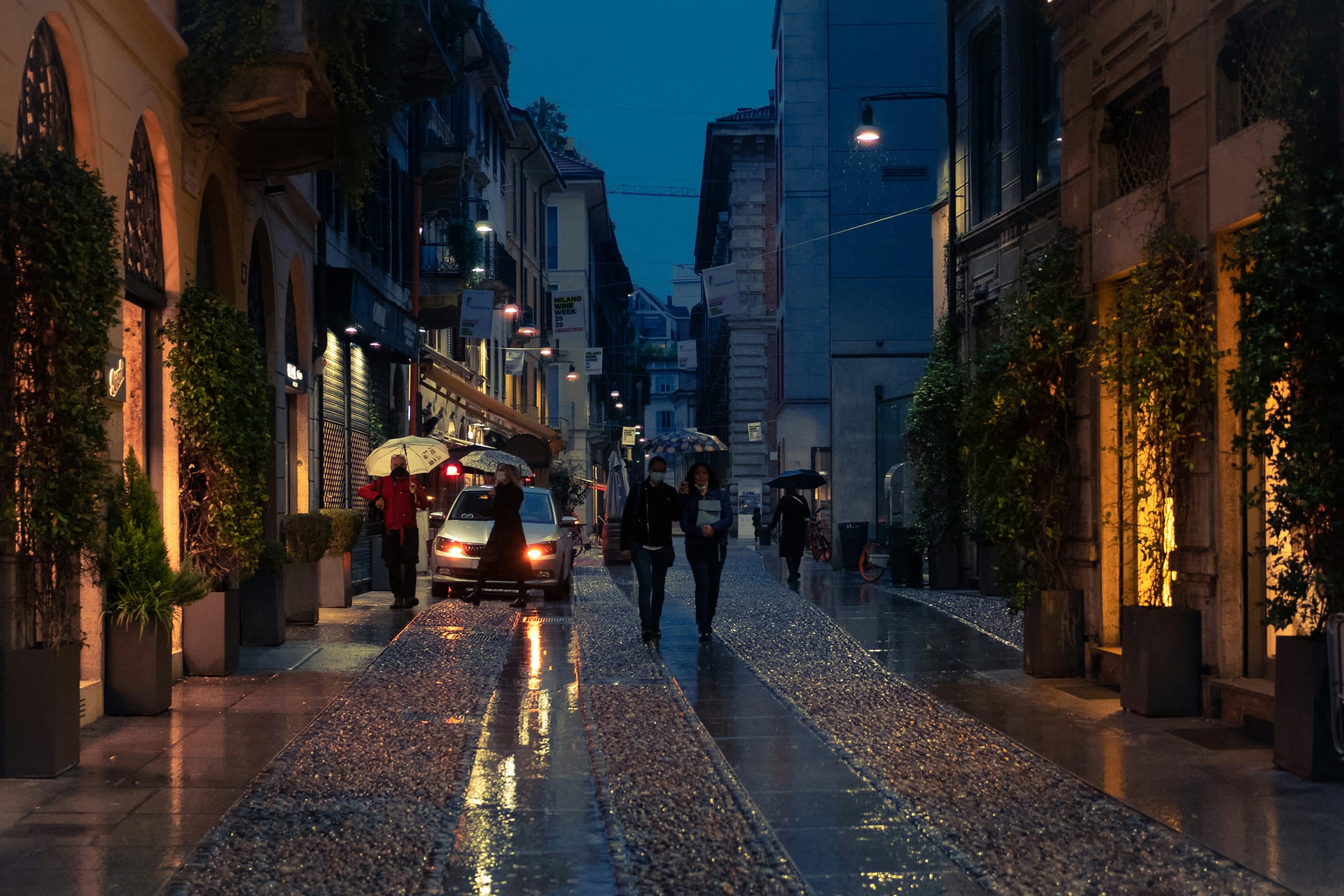
Milan and Lake Como both rank among the best places to stay in Italy. Milan is Italy’s glamorous design capital, and Lake Como is a scenic escape at the base of the Alps. Pairing both destinations on an itinerary grants you two very different perspectives on life in Italy. Milan is often the first stop on a northern Italy tour, and pairs perfectly with northern Italy’s lakes. This guide breaks down how to get from Milan to Lake Como, with expert tips from Fora travel advisors.
Book and plan your northern Italy trip with a Fora Advisor, and they’ll build an itinerary to satisfy your travel goals. Your advisor will help you decide which mode of travel makes the most sense, can book all your accommodations, unlock complimentary hotel perks at our travel partners’ properties and help you choose what to do in Lake Como and Milan.
Flying into Milan
Unless you’re visiting Lake Como from a nearby destination in Italy, chances are you’ll be flying to one of three major airports in the Milan metropolitan area (see where to stay in Milan if you’re looking to break up your trip). Milan Malpensa Airport (MXP) is the largest and most internationally connected option; it’s about 40 minutes northwest of Milan’s city center, or Centro Storico, by car. If you’re traveling from the United States, you’ll most likely land here, as this is the only airport in the area that services flights from outside the European Union. From this airport, you can take a train, bus or car to Lake Como.
There’s also Bergamo Orio al Serio Airport (BGY), which is about 30 miles northeast of Milan, in Bergamo, and Milan Linate (LIN) airport, which is much closer to Centro Storico. Both primarily handle domestic flights and short international flights from within the EU. The former offers direct access to Lake Como by train or bus. From the latter, you’ll either need to rent a car to visit the lake directly or travel to one of Milan’s transportation hubs first.
Taking the train from Milan to Lake Como

Milan offers three train routes to various points around Lake Como. All three routes take around an hour or less (barring delays), and are generally considered the most efficient and reliable ways to get from Milan to Lake Como. Up to two trains per hour make the trip, and average rates range between $5–$13 for one-way tickets. You may also save money by booking your train fares in advance, which most Fora Advisors recommend anyway, as Lake Como is one of the most popular destinations in Italy, and bookings go quickly. Once you arrive at one of the lake’s train stations, you’ll have the option to take a ferry, bus or other mode of travel to your intended destination.
“It is not easy getting around Como, and you should plan everything far in advance,” Fora Advisor Wendy Wallace recommended. A Fora Advisor can help you arrange transportation.
Here’s how to get to Lake Como from Milan’s three train stations.
Milano Central to Como S. Giovanni
Milano Centrale, the city’s main train station just outside of Centro Storico — arguably the best place to stay in Milan — to Como S. Giovanni is the most popular route. You’ll journey on high-speed or regional trains that take around 35–40 minutes, and arrive in Como Town, near the southwestern edge of the lake.
Milano P.ta Garibaldo to Como S. Giovanni
Trains from Milano Porta Garibaldi, which is closer to Milan’s Centro Storico, also serve Como S. Giovanni. The schedule is slightly different — but the travel times are similar — and may be more convenient if you’re staying in Centro Storico neighborhoods.
Milano Cadorna to Como Nord Lago
If you want a more scenic and leisurely experience, trains from Milano Cadorna — to the west of Centro Storico — travel to Como Nord Lago station, which is located just steps from the lakefront. This route takes about an hour and provides easy access to Como's charming town center and waterfront attractions. The train travels through several towns and rolling countryside, offering a closer look at northern Italy. As the train nears Como Town, you’ll catch glimpses of the hills that surround the lake, and eventually Lake Como itself.
“If there’s one piece of travel advice I would offer for northern Italy, it’s to slow down and savor the experience,” Fora Advisor Marisa Schwab said. “This region is rich in history, culture and stunning landscapes, so take the time to explore not just the popular attractions but also the hidden gems.”
Taking a bus from Milan to Lake Como

Taking a bus from Milan to Lake Como is another convenient option, with several direct routes available. Buses typically depart from Milan's main transport hubs, such as Milano Centrale or the Lampugnano bus station, and head to towns including Como, Bellagio and Lecco. The journey can take anywhere from 1–2.5 hours, depending on the route and the final destination.
Most buses offer comfortable seating and space for luggage, making them a practical choice for those who prefer a straightforward, single-mode option without having to navigate train schedules or transfers. One of the key advantages of traveling by bus is the direct access it provides to towns not served by train, such as Bellagio or Menaggio, saving you from having to switch to a ferry or other mode of transport upon arrival in Como Town.
Additionally, bus travel can be more cost-effective than some train routes, especially for small groups or families. The downside is that bus travel is often slower than trains, particularly on routes with traffic congestion or frequent stops. Buses don’t run as frequently, either, and are more prone to schedule changes.
Taking a car from Milan to Lake Como
Visiting Lake Como by car from Milan offers flexibility and the opportunity to experience the journey at your own pace. The drive typically takes 1–1.5 hours, depending on your destination, and allows you to travel directly to the lake (or your accommodations) without the need for transfers. The main routes are well maintained, and as you approach Lake Como, the roads begin to wind through villages and along the shoreline. This can be confusing to navigate on your first visit, but having a car also provides easy access to more remote or less touristy areas of the lake.
Parking around Lake Como is limited and expensive, however, especially in popular towns during peak season. Not all resorts offer parking. Additionally, the roads near the lake are often narrow and winding, which might be intimidating for less experienced drivers. You’ll also pay more to rent a car and fuel it than you will if you take a train or bus.
Uber and other rideshare apps are not widely available around Lake Como, and you may have trouble finding a driver willing to take you the whole distance or around the lake. Taxis will take you to Lake Como from Milan, but at an anticipated cost of $90–$120, it may make more sense to hire a private transfer service and get more for your value or rent a car to save money. A Fora Advisor can help you weigh your options.
There are many points where you can stop or stay around Lake Como

Lake Como is dotted with charming towns along its shores, including Como Town on the southwestern edge, Varenna and Bellagio in the central lake area and Menaggio on the western shore. The location you choose to visit or stay at can influence the best route to take. For example, if you’re heading to Como Town, trains from Milan’s Centrale or Cadorna stations to Como San Giovanni or Como Lago Nord provide easy access. Alternatively, if you’re bound for Varenna, which is ideal for exploring the lake’s central region, a train from Milano Centrale to Varenna-Esino is the most direct option.
In other words, there’s a lot of nuance among destinations that can dramatically alter your directions. If you’re visiting Lake Como from another destination in Italy, check out our general article on how to get to Lake Como instead.
Plan your trip to Lake Como with a Fora Advisor
Getting from Milan to Lake Como can be straightforward once you know all your options. A Fora Advisor can break down which methods make the most sense for your specific itinerary, and arrange things like rental cars or private transfers. If you also need help deciding where to stay in Lake Como or what to do while you’re there, your advisor will be happy to help. Connect with a Fora Advisor to get started.
How to get from Milan to Lake Como: FAQs
Read on for more details on how to get from Milan to Lake Como.
Is it worth going to Lake Como from Milan? Can you make a day trip out of it?
Lake Como is one of Italy's most scenic destinations, and you can easily make a day trip from Milan. The journey takes between 40–90 minutes. From there, you can take a ferry to explore charming towns like Bellagio and Varenna.
Many tour operators offer day trips by bus that include stops at multiple lakeside towns, a boat ride and a knowledgeable guide to enhance the experience. However, tours may feel less flexible if you prefer to set your own pace. A Fora Advisor can set you up with a reputable tour from a trusted partner.
Related guides : Things to Do in Lake Como, Italy for a Luxury Trip and Relaxation in Lake Como and Milan
How far in advance should you make travel arrangements in Lake Como?

Book travel arrangements for Lake Como at least two to three months in advance (and for hotels, at least six months). Fora Advisor Bekah LeBeau recommended booking everything from your meals and experiences to water taxis far in advance.
What is the easiest way to get to Lake Como?
Italy’s railroads are highly efficient, allowing you to reach Lake Como from almost anywhere in the country.
Can you explore Lake Como without a car?
Certainly. Water taxis, ferries and buses will take you to points around the lake. Most options are affordable and operate on a frequent basis.
Is Como Town a good base for exploring Lake Como?
Yes. Como Town is an excellent base for exploring the lake, especially for first-time visitors. Its location at the southern tip of the lake makes it easily reachable from Milan. The town also serves as a major transportation hub for exploring other parts of the lake, with frequent ferry connections to towns like Bellagio, Varenna and Tremezzo. Como Town itself has plenty to enjoy, as well, including the Duomo di Como, the Piazza Cavour and a scenic waterfront promenade.
Related article: Fora’s Guide to Where to Stay in Lake Como, Italy
More Italy travel inspiration
Check out more Italy travel articles:
